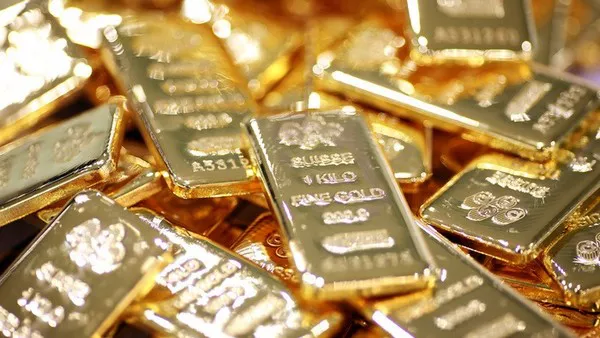Gold has experienced a strong performance this year, even soaring above $3,400 per ounce — a historic peak for the precious metal. However, recent weeks have brought notable shifts. Influenced by changing inflation expectations, fluctuating Treasury yields, and fluctuating demand for safe-haven assets, gold prices dipped to around $3,200 in mid-May before starting to recover.
This volatility highlights how dynamic the gold market remains, especially in today’s unpredictable economic environment. For investors considering gold or other assets, anticipating possible price movements is key to making informed decisions.
We consulted market experts to outline three potential scenarios for gold prices in June, explaining the conditions that could lead to each outcome.
Gold Prices Could Stabilize
Many analysts expect gold prices to remain relatively steady throughout June. A key factor is the upcoming Federal Reserve meeting scheduled for June 17, where policymakers may adjust the federal funds rate. Such decisions can either stimulate or dampen gold demand depending on whether rates rise, fall, or remain unchanged.
Ben Nadelstein, head of content at Monetary Metals, emphasized the meeting’s importance: “Any change in policy direction or even a shift in tone around future rate cuts could move the gold market.”
Currently, the CME Group’s FedWatch tool indicates only a 5.6% chance of a rate change as of May 27, making dramatic price shifts unlikely before the meeting. Post-meeting, the implementation of new tariffs might also influence gold prices.
“Gold prices have been reacting more to headlines than substantive global changes recently,” said Brett Elliott, director of content at precious metals marketplace APMEX.
Gold Prices Could Decline
There is also potential for gold prices to drop, particularly if the Fed opts for a rate hike at its June meeting — a scenario considered unlikely but possible.
“A rate hike could occur if tariffs drive inflation higher and the labor market remains robust,” Elliott explained. “This would likely shift capital away from gold and into Treasuries.”
Moreover, easing geopolitical tensions or trade disputes could reduce gold’s appeal. “If trade wars are resolved, central banks stop buying gold aggressively, or the U.S. government tightens fiscal policy, gold prices might retract,” Elliott added.
However, a significant decline is unlikely, as Central Bank purchases continue strongly. James Cordier, CEO and head trader at Alternative Options, noted, “Central Bank buying sets a solid floor beneath gold prices.”
Gold Prices Could Rebound
Conversely, gold could surge if economic indicators in June signal a downturn, prompting the Fed to lower interest rates. Lower rates typically weaken the dollar, boosting gold’s appeal as a safe haven.
“A softer economic outlook usually leads to calls for lower U.S. interest rates, which would increase gold demand,” Cordier said.
Additionally, escalating geopolitical risks — such as stalled trade talks, rising global tensions, or stock market corrections — could further propel gold prices.
Nadelstein added, “If risk factors intensify and interest rate expectations drop, gold could break through to new highs.”


